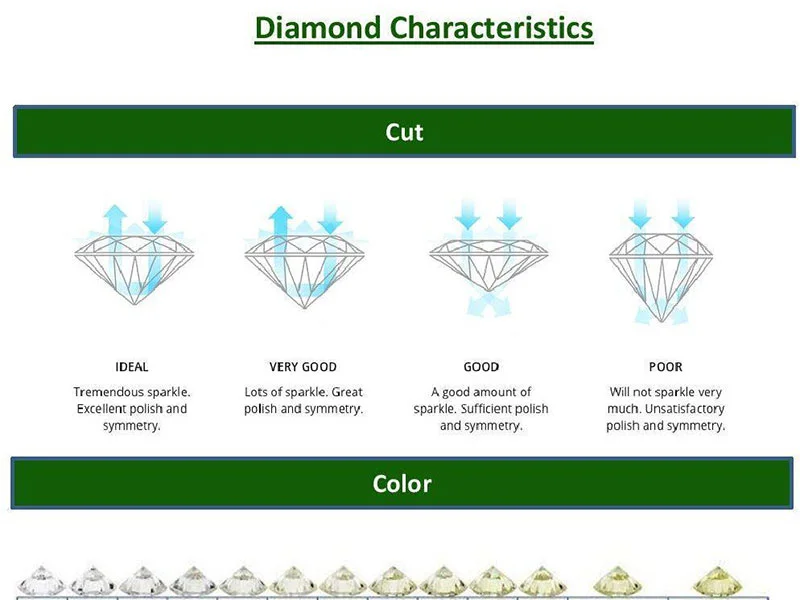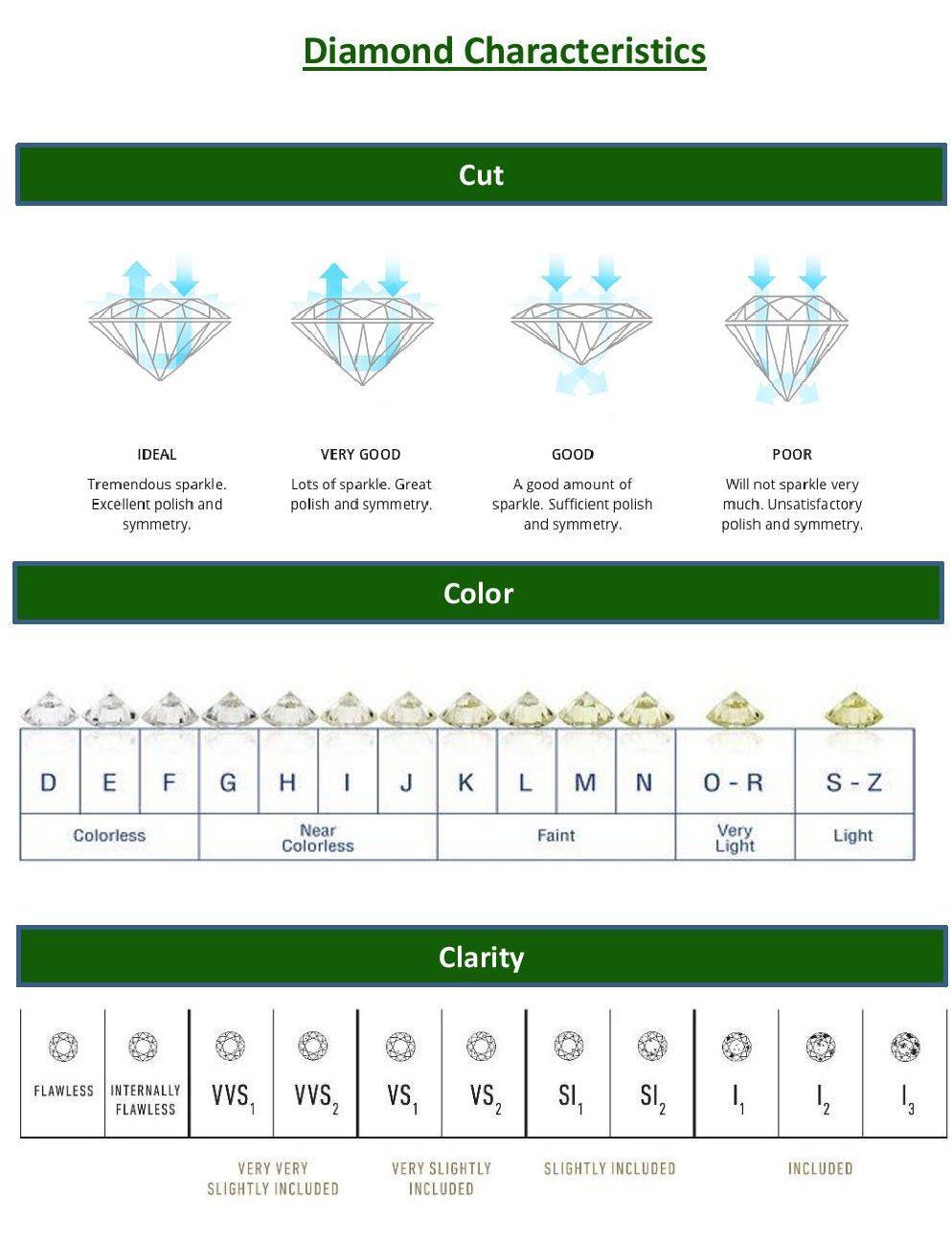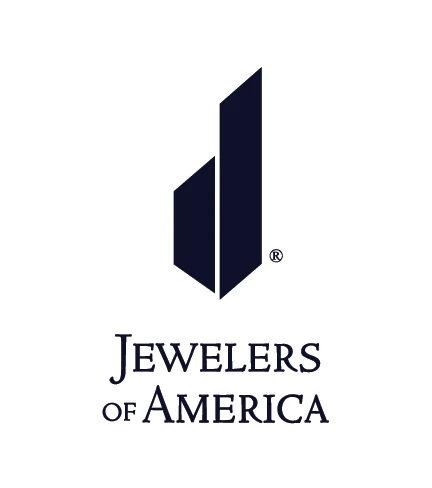Diamonds and the 4C’s
As we approach Valentine’s Day, I am sure there are some of you who are in the market to buy a diamond. Congratulations to both of you and I wish you luck as you maneuver through the process of purchasing a diamond engagement ring.
DW Gems, LLC is here to help guide you and teach you how to buy the best diamond for your money. In this blog, I will go through the 4C’s and what they all mean. As always, if you have more questions, please feel free to contact me. I have access to thousands of diamonds and I would be happy to assist you.
Until the middle of the twentieth century, there was no agreed-upon standard by which diamonds could be judged. The Gemological Institute of America (GIA ) created the first, and now globally accepted standard for describing diamonds: Color, Clarity, Cut and Carat Weight. Today, the 4Cs of Diamond Quality is the universal method for assessing the quality of any diamond, anywhere in the world. The creation of the Diamond 4Cs meant two very important things: diamond quality could be communicated in a universal language, and diamond customers could now know exactly what they were about to purchase.
COLOR
When evaluating the color of a gem-quality diamond, it is based on the lack of hue, similar to a drop of pure water. The less color in a diamond will give it a higher value.
The GIA created a scale from D-Z which is most widely used in the jewelry industry. The scale begins with the letter D and is considered colorless, with increasing color presence, to the letter Z. Many of these color distinctions are so subtle, it requires a trained eye (experienced gemologist) with a set of master stones, to determine the color.
Diamond fluorescence, in its most simple form, is the effect that ultraviolet (UV) light has on a diamond. When you stand under a blue light or ultraviolet light, sometimes you can see your whites get brighter or your teeth appear to glow. Diamonds in the D to H color range with a bluish fluorescence are often considered less desirable by the trade. Some believe that a bluish fluorescence may cause a hazy or oily appearance in these diamonds, but only if the fluorescence intensity is very strong. Not all diamonds with very strong bluish fluorescence look oily, however, and they may sell for less than diamonds that do not have blue fluorescence. With all other items being equal, a diamond with fluorescence will typically be sold 5% to 10% lower.
The difference in value from one color to another can be huge, so it is important to know that the color grade is accurate.
CLARITY
Natural diamonds are created when the element carbon is exposed to tremendous heat and pressure deep in the earth. This process can result in a variety of internal characteristics called ‘inclusions’ and external characteristics called ‘blemishes.’
The GIA created a scale with 6 categories, some which were split up to create a total of 11 individual clarity grades.
Again, you need an experienced gemologist to properly determine this grade since most people will not be able to see some of the inclusions or blemishes without magnification. A gemologist will take into account the size of the diamond, the number, size, relief, nature, and position of these characteristics, as well as how these affect the overall appearance of the stone. While no diamond is perfectly pure, the closer it comes, the higher its value.
There can be a substantial difference in value between a VS2 and an SI1, so you need to make sure you have the correct clarity grade.
CUT
In my opinion, this is the most important factor when buying a diamond.
Cut does not refer to the shape of the diamond, but more about how well a diamond’s facets interact with light. Granted, because diamonds are faceted, they all will have some “sparkle”, but the better the cut, the more sparkle a diamond will have.
Precise artistry and workmanship are required to fashion a stone so its proportions, symmetry, and polish deliver the magnificent return of light only possible in a diamond.
Of all the 4Cs, it is the most complex and technically difficult to analyze.
The GIA Cut Grading System evaluates 7 different categories. The first three, brightness, fire, and scintillation, consider the diamond’s overall face-up appearance. The remaining four, weight ratio, durability, polish, and symmetry, assess a diamond’s design and craftsmanship.
BRIGHTNESS
Internal and external white light reflected from a diamond.
FIRE
The scattering of white light into all the colors of the rainbow.
SCINTILLATION
The sparkle a diamond produces and the pattern of light and dark areas caused by reflections within the diamond.
CARAT WEIGHT
Diamond carat weight is the measurement of how much a diamond weighs. A metric “carat” is defined as 200 milligrams.
Each carat can be subdivided into 100 ‘points.’ This allows very precise measurements to the hundredth decimal place. A jeweler may describe the weight of a diamond below one carat by its ‘points’ alone. For instance, the jeweler may refer to a diamond that weighs 0.25 carats as a ‘twenty-five pointer.’ Diamond weights greater than one carat are expressed in carats and decimals. A 1.08 carat stone would be described as ‘one point oh eight carats.’
Loose diamonds are traditionally weighed on electronic carat weight scales to get exact weights. When diamonds are set, experienced gemologists will have to measure the diameter and depth of the diamond and use a mathematical formula to determine an approximate weight.
All else being equal, a diamond price increases with carat weight, because larger diamonds are rarer and more desirable. But two diamonds of equal carat weight can have very different values (and prices) depending on three other factors within the 4Cs: Clarity, Color, and Cut. It’s important to remember that a diamond’s value is determined using all of the 4Cs, not just carat weight.
SYNOPSIS
Since diamond grading is subjective, you may find that some graders may differ on the grading of a stone, especially if they are in settings. There could be very subtle differences that cause this. When you have diamonds over 1.00 ct., and you have differing grades, it may be worth having a GIA Report done on the stone so you can get the most accurate grade available. These can only be done on loose stones, so you may incur unsetting and re-setting charges.
I will be happy to help you with all your diamond needs.
Contact me for an appointment.




